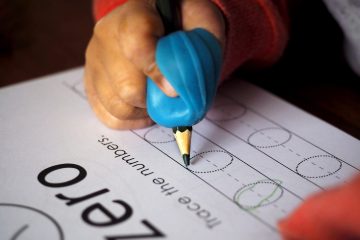
Guest Post by Michael Gurian
Literacy matters. Reading, writing, and speaking intersect with everything in life: character development, emotional intelligence, and physical fitness. Reading is essential for successful brain development in children, and stories help build character and emotional development. There are few career areas in which literacy skills—reading, writing, critical thinking, articulation of positions in words, and even anecdotal storytelling—are not essential for success. The Boy Scouts of America’s mission to help boys be “Prepared. For Life.®” is directly correlated with the need for literacy in America and precisely why the BSA incorporates literacy skills into so much of its program.
Why boys lag behind girls
In general, the male brain develops verbal abilities later than the female brain. Female brains develop verbal centers early, and many girls are nurtured to read every day and develop a love of reading. Gender differences in male and female brains create more verbal vulnerability for males in general. These brain differences exist in all cultures and races, and the literacy levels among boys are lower than girls in all socioeconomic groups.
|
One in seven American adults (32 million) has such low literacy skills that it is challenging to understand a medication’s side effects as listed on a pill bottle. |
Diminished male literacy begins early—boys’ reading/writing skills are approximately one to one and a half years behind girls’. Boys do not want to admit they are behind, and they suffer for it. Boys who have any kind of literacy issue need specific attention in boy-friendly literacy teaching in the same way that girls have been discovered to need special attention in female-friendly improvement of STEM and science learning.
Boys and video games
Many women wonder why boys and men are attracted to video games, and there is actually science behind the appeal of video games to males. The right hemisphere of the male brain in all cultures, races, and ethnicities is chiefly dedicated to visual-spatial processing; video games are visual and spatial. (The right side of the female brain in all cultures, races, and ethnicities is generally more greatly dedicated to verbal-emotive processing.)
Findings from brain science research are robust. One finding involves the reward center of the brain, the caudate nucleus. When the male brain feels like it has accomplished something, this nucleus fills with activity and stimulates the release of dopamine (the feel-good chemical) throughout the body. Video games create the same internal reward. In part, boys are attracted to video games because the games are a visual-spatial medium.
Hormones and neurotransmitters also matter. Males are driven by testosterone and vasopressin. They bond through aggression activities (testosterone) and territorial/hierarchical challenges (testosterone and vasopressin) more frequently than girls. Girls are driven by a number of hormones, including estrogen and oxytocin, both of which encourage verbal-empathic bonding more than aggression-challenge bonding. Video games are aggression-challenge, competition-oriented, thus tending to attract males more than females.
When boys play video games for too long per day, their brains will feel a lot of reward chemistry and think “I’ve accomplished a lot, I’m succeeding, I’m growing, I’m maturing,” but actually that boy has accomplished only successful gaming.
|
If a boy is convinced of his own incompetence at 8 years of age, he is more likely to fail in high school. |
The link between illiteracy and incarceration
Boys who do not graduate from high school are three to four times more likely to get in trouble with the law than their peers who graduated. One in 10 high school dropouts is in jail or juvenile detention. Among high school graduates, the number is one in 35. At the root of academic failure among these boys is nearly always a failure to succeed in reading, writing, critical thinking, and other areas built by literacy achievement.
As a society we pay attention to socioeconomic factors and learning disabilities, which are absolutely crucial pieces of the puzzle, but we miss the nearly universal causal factor of school dropout rates: lack of literacy. Boys who drop out and get into trouble feel unable to compete with peers in their ability to read and write and/or understand and analyze. When they discover prison-based academic programs, they find a light at the end of the tunnel. Inmates participating in literacy programs are significantly less likely to return to criminal activity following their release from incarceration.
|
Discover Your Child’s Literacy Needs with this assessment from the Gurian Institute. |
Changing young boys from reluctant readers to active readers
What, specifically, will help boys gain the best literacy skills possible? Adolescent boys can be especially aided by male literacy role models. The more a pubescent boy (8 to 9 years old onward) associates literacy with models of successful manhood, the more likely he is to want to become more literate. In connecting literacy to manhood, parents should increase the game, challenge, and reward component of literacy learning, setting up a system of rewards for reading and writing that boys can earn through showing competence.
Women can help young boys learn to use and love words, but once boys enter adolescence, most of them need older boys, young men, fathers, male mentors, and older men to guide them. Our ancestors knew that many boys need help, so boys were targeted for increased literacy by apprenticeship to men (like artists, writers, leaders) who embodied and taught that literacy.
| Boys connect competition and competence with manhood as they grow through adolescence. Your goal is to help them associate literacy with manhood. |
All the evidence points to a significant truth: Whether a boy is in a highly functional home, but one in which video games or other distractions are keeping him from becoming literate, or in a home or community where there is substance abuse, incarceration, or other socioeconomic difficulties, literacy might be an issue. As boys attain better self-esteem educationally and learn to guide and shape their own lives through the world of books, words, ideas, and character ideals, they build better brains and better lives, and they improve their chances of doing well in the future.
Meeting the literacy challenge in Scouting
The Boy Scouts of America is a national organization committed to improving male literacy at all levels and across all ethnic groups. The organization has joined forces with many in the field of male development to help boys learn to love reading, writing, and all the components of literacy. The BSA’s Boys’ Life magazine, in circulation for more than 100 years, is one of the most boy-friendly periodicals available today.
The writing style of Boys’ Life magazine includes vocabulary that can help even reluctant readers successfully move through the pages. Articles and stories are fun and active, involving heroes, sports stars, nature trips, and most importantly, active and challenging quests and journeys. To provide a secondary style of reading and analyzing, the magazine includes jokes, comic strips, and puzzles. It features historical figures of importance, yet does not shy away from linking some of its writing to some of the video games boys play. For boys, especially adolescent boys ages 10 and older, “wasting time reading” is considered an enemy. Boys’ Life does not waste their time with material irrelevant to their lives.
As boys read Boys’ Life magazine, they read a magazine written for them. For specific examples of how the features in Boys’ Life can assist a boy’s literacy level and encourage a love of reading, visit http://boyslife.org/literacy/.
Copyright Michael Gurian 2013


